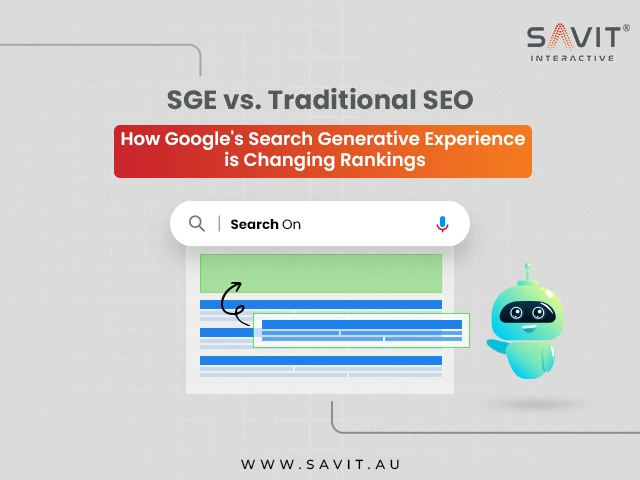A quick guide to understanding and tracking Google SERP like a pro.
When you search something on Google, the results that show up are called the Google SERP. It stands for Search Engine Results Page. This is the page you see after typing a question or keyword into the Google search bar.
But Google SERP is more than just a list of links. It has many different sections like ads, featured answers, maps, images, videos, and more. These are known as SERP features, and they change how people interact with search results.
If you’re trying to grow your website or improve your online visibility, it’s important to understand what Google SERP is, how it works, and how to track it. This blog will explain what is SERP, go over the SERP features, and show you the best tools and APIs that help monitor and improve your performance on Google.
What is SERP?
SERP stands for Search Engine Results Page. It is the page that appears after you search for something on Google or any other search engine.
For example, if you search “best seo agency in Australia,” Google shows a page with results like websites, ads, images, and sometimes product listings. That page is the Google SERP.
There are two main types of results on a SERP:
- Organic results: The Organic results are free listings that appear based on how useful Google thinks the content is.
- Paid results (ads): The paid results are sponsored links that businesses pay for to appear at the top or bottom of the page.
Google SERP can look different depending on what you search. It may include maps, videos, news, or other special results called SERP features.
What Are SERP Features?
SERP features are special results on the Google SERP that go beyond the regular blue links. These features are added by Google to help users find answers quickly and easily.
Here are some common SERP features you might have seen:
1. Featured Snippets
These show a short answer to your question right at the top of the page. For example, if you search “how to bake a cake,” you might see a quick step-by-step answer above the normal results.
2. People Also Ask (PAA)
This section shows related questions with drop-down answers. It helps users explore more about the topic they searched for.
3. Knowledge Panel
Appears on the right side of the page with key details about a person, place, or topic. It includes images, facts, and links.
4. Local Pack (Map Results)
When you search for something like “digital marketing agency near me,” you’ll see a map with local business listings. This is the local pack.
5. Image Pack
This shows a row of images related to your search. Clicking on it takes you to Google Images.
6. Video Results
Sometimes Google shows videos from YouTube or other platforms when the search is about tutorials, reviews, or guides.
7. Top Stories
News articles appear under this section when the search is related to current events or trending topics.
8. Shopping Results
Product ads with prices and ratings often show up when you search for something to buy. These are from Google Shopping.
9. Sitelinks
These are extra links under the main result. They help users go directly to a specific page on a website.
10. Shopping Ads
These are product-based ads that show up when someone searches for something to buy. You’ll see images, prices, product names, and store names right at the top or side of the Google SERP. These ads come from Google Shopping.
These ads are helpful for users who are ready to buy, and they’re great for sellers who want to display their products right away.
11. Ads at the Top/Bottom
Apart from shopping ads, Google also shows text ads at the top or bottom of the search page. These are paid results, and they usually look like regular links but with a small “Ad” label.
These ads appear when businesses bid on keywords to show up for related searches.
How They Differ from Traditional Search Results
Here’s how all these SERP features and ads are different from regular (organic) search results:
| Feature | Paid or Organic | What It Shows |
| Traditional results | Organic | Normal website listings with title & link |
| Shopping Ads | Paid | Products with images, prices, and store name |
| Text Ads | Paid | Sponsored links marked with “Ad” |
| Other SERP features | Mostly Organic | Quick info like snippets, images, maps, etc. |
While traditional results are earned based on content quality and SEO, the ads are paid placements, and other SERP features are added by Google to make search more helpful.
Why SERP Features Matter for SEO
If you’re trying to grow your website, showing up in the right place on the Google SERP can make a big difference. That’s where SERP features come in. They can help your content stand out and get more attention, even if it’s not ranked first.
Here’s why SERP features are important for SEO:
1. More Visibility
SERP features like featured snippets, image packs, or video results show up higher on the page. If your content appears in these sections, users will see it before the regular links. This gives your website more chances to get noticed.
2. Higher Click-Through Rate (CTR)
Getting featured in a snippet or map pack often brings more clicks. People trust results that Google highlights, and they are more likely to click them.
3. Less Dependence on Ranking #1
In many cases, even if your site isn’t the first organic result, you can still get top placement through SERP features. This helps smaller or newer websites compete with big brands.
4. Better Understanding of User Intent
Google uses SERP features to match what people are really looking for. If your content answers those questions directly, it’s more likely to be featured — which means you’re giving users what they want.
5. Local SEO Boost
If you run a local business, showing up in the local pack (map section) can bring nearby customers directly to you. It’s one of the most effective ways to grow a local presence.
By paying attention to what are SERP features and how they appear on the Google SERP, you can plan your content better and increase your chances of showing up in more places — not just in the regular blue links.
How to Analyze and Track SERP Results
Understanding your position on Google SERP is more than just checking where your website ranks. It’s also about knowing how visible your site is, what SERP features you’re appearing in, and how you compare to others.
Here’s how you can analyze and track SERP results effectively:
1. Why Tracking SERP Positions and Features Is Important
- It shows how well your SEO efforts are working.
- Helps you spot new opportunities to appear in SERP features like featured snippets or local packs.
- Tracks how competitors are ranking for the same keywords.
- Let’s you understand user intent and create better content.
- It helps you identify ranking drops early, so you can take action quickly.
2. Key Metrics to Watch
To get meaningful insights, focus on these simple metrics:
- Ranking Position: Where your page appears on the Google SERP for a keyword.
- Feature Presence: Are you appearing in SERP features like snippets, maps, videos, or image packs?
- Visibility Score: This shows how visible your site is across all your keywords — higher visibility means better chances of getting clicks.
- Click-Through Rate (CTR): The percentage of users clicking on your result after seeing it.
- Search Volume: How many people are searching for your target keywords.
3. Use Cases of SERP Tracking
- Competitor Analysis: You can track where your competitors are ranking and which SERP features they appear in. This helps you improve your strategy and fill content gaps.
- Keyword Performance: Check which keywords are bringing you traffic, which ones dropped in rank, and which ones are worth optimizing.
- Opportunity Identification: Spot low-competition keywords or SERP features you’re not using yet — and target them to gain better visibility.
Top Tools to Track Google SERP
If you want to know where your website stands on the Google SERP, there are tools that can help. These tools show how your pages rank, what SERP features you’re appearing in, and how your keywords are performing.
Here are some of the most popular and easy-to-use Google SERP tool options:
This free tool by Google shows how your website appears in search. You can check keyword positions, clicks, impressions, and more. It’s the best way to understand your site’s performance directly from Google.
2. SEMrush
SEMrush lets you track keyword rankings and check if your site shows up in any SERP features. It also gives insights into your competitors and how they perform on Google SERP.
3. Ahrefs
Ahrefs is another powerful tool that helps track your website’s keyword rankings, backlinks, and SERP features. You can also see what content is ranking and how it’s performing over time.
4. Moz Pro
Moz offers rank tracking and SERP analysis. It helps you see which keywords you’re ranking for and if you’re showing up in snippets or other SERP features.
5. Google SERP API Tools
If you’re a developer or using custom software, a Google SERP API can pull real-time data from Google search results. These tools help automate tracking without manually checking each keyword.
Some commonly used Google SERP API services include:
Google SERP APIs: Automating SERP Tracking
Tracking your keyword rankings manually can take a lot of time, especially if you’re handling many keywords or clients. That’s where a Google SERP API comes in handy. It helps you automate the process and get real-time updates from Google SERP without the need to check each result yourself.
What is a Google SERP API?
A Google SERP API is a tool that pulls search result data directly from Google. Instead of searching manually, the API sends a request to Google, collects the data (like ranking position, featured snippets, ads, etc.), and returns it in a ready-to-use format.
This is useful for developers, SEO professionals, and agencies who want to track keyword rankings, SERP features, and competitors — all at scale.
Benefits of Using SERP APIs
Here’s why many SEO teams prefer using a Google SERP API:
- Real-Time Data: Get the most up-to-date search results without delay.
- Saves Time & Effort: Automates keyword checks and tracking, saving hours of manual work.
- Scalable for Larger Projects: Easily monitor thousands of keywords and multiple domains at once.
- Custom Dashboards & Reports: Use the data to create your own tracking systems, alerts, or visual dashboards.
- Track Multiple Locations & Devices: Monitor how your keywords rank on desktop vs. mobile or in different cities or countries.
Common Use Cases
- Keyword Monitoring: Automatically check how your keywords perform over time.
- Competitive Tracking: See how your competitors are ranking for the same terms.
- Custom SEO Dashboards: Build live dashboards showing keyword trends and SERP features.
- Content Opportunity Analysis: Spot where you or others are showing in snippets, people also ask, or image packs.
Popular Google SERP API Tools
Here are some trusted tools that offer Google SERP API services:
- SerpApi – Known for fast results and supports many search types (images, news, maps, etc.)
- Scale SERP – Offers affordable pricing with real-time data and high accuracy
- DataForSEO – A powerful tool for building keyword tools, dashboards, or reports
- Zenserp – Great for quick, simple searches and easy to integrate
- Bright Data (formerly Luminati) – Suitable for large-scale data scraping and enterprise SEO
Tips to Optimize for Google SERP Features
To make the most of Google SERP features, you need to do more than just rank. You need to stand out in features like featured snippets, local packs, image results, videos, and “People Also Ask” boxes. Here are some tips to help you optimize for these features:
- Use structured data and schema markup to highlight key information like reviews, recipes, FAQs, and products, improving your chances of appearing in rich results.
- Answer questions clearly and directly to increase your chances of appearing in featured snippets and People Also Ask (PAA) boxes.
- Optimize for local SEO by adding your business to Google My Business, using local keywords, and including location-specific terms in your content.
- Optimize your images and videos by using descriptive file names, alt text, captions, and relevant titles to increase visibility in image and video results.
- Focus on mobile-first content by ensuring your website is mobile-friendly, with fast loading times, easy navigation, and readable text.
Mastering Google SERP for SEO Success
Optimizing Google SERP features is an essential part of any successful SEO strategy. By understanding how SERP works and using the right tools, you can improve your visibility, drive more traffic, and stay ahead of the competition. Whether you’re focusing on structured data, answering questions directly, or improving local SEO, these techniques help you stand out in a crowded search results page.
To truly excel, it’s crucial to track your rankings and SERP features regularly. Tools like Google SERP APIs and SERP tracking can automate this process, saving you time and delivering real-time data. Savit Interactive understands the importance of effective SERP optimization and offers tailored solutions to help scale your SEO efforts. With the right approach and tools, you’ll be able to rise above the competition and capture more attention on Google SERP.



